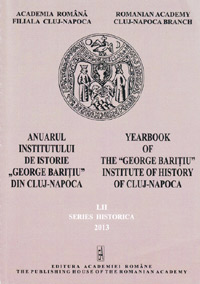Mobilitatea socială în oraşul Hunedoara. 1945-1968
Social Mobility in the City of Hunedoara, 1945-1968
Author(s): Mara MărgineanSubject(s): History
Published by: Editura Academiei Române
Keywords: Gheorghe Gheorghiu-Dej; Hunedoara; migration; steel industry; bureaucracy
Summary/Abstract: Between 1945 and 1968 the population of the Romanian city Hunedoara grew from 7,000 to 70,000 people. As less than fifteen percent were born within the city’s limits, the other eighty five were incoming migrants originating in all parts of the country. At the core of this mobility process there were placed both practical and ideological concerns. For the large mass of the people, the newly built urban space would open up possibilities for better living conditions given the numerous and highly remunerated jobs in the steel plant in the city. For the politicians, instead, the ideological rhetoric claiming that the development of the heavy industry would grant the country’s economic independence fuelled a complicated program aiming to modernize both the space and the people inhabiting it. Dwelling upon archival documents and employing the theoretical model of development as expression of ultramodernism, coined by James C. Scott, this study approaches the labour force’s mobility towards Hunedoara from three main overlapping perspectives: the ideological grounding of the economic program, the bureaucratic involvement into the making of the site, and the population’s reaction to it as stated in the dynamic of the socioprofessional structure of the city.
Journal: Anuarul Institutului de Istorie »George Bariţiu« - Series HISTORICA
- Issue Year: LII/2013
- Issue No: 52
- Page Range: 381-402
- Page Count: 22
- Language: Romanian

